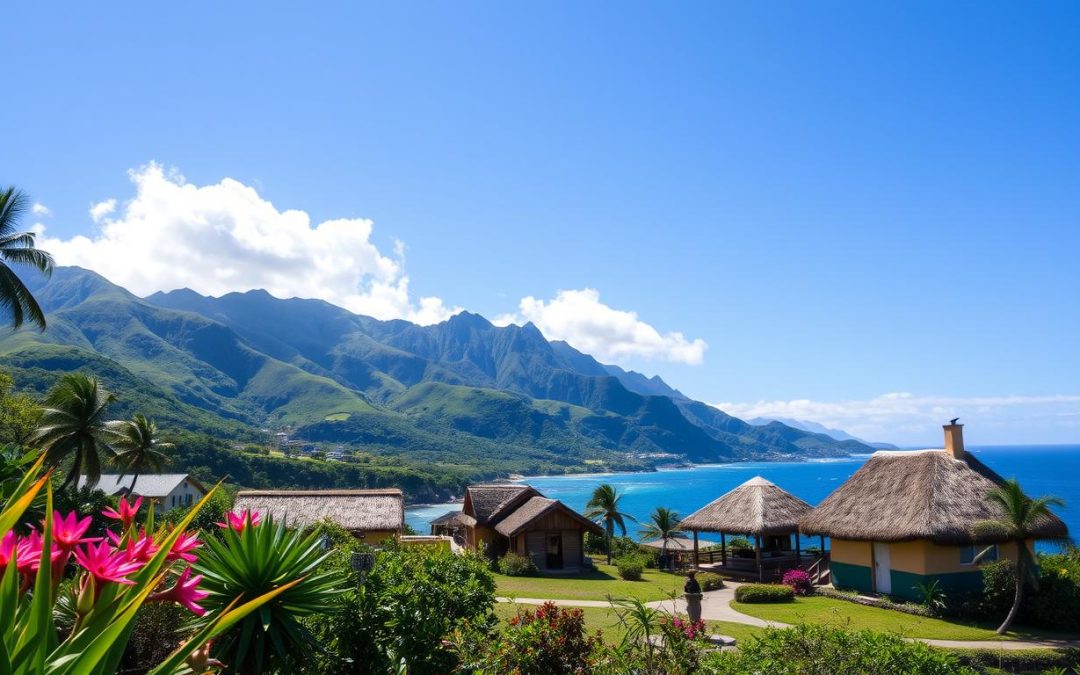Ever wondered how a small Pacific island keeps its language alive in today’s world? American Samoa is a great example. It mixes old traditions with new ways of talking.
In American Samoa, you’ll find English and Samoan as the official languages. This mix shows the area’s deep cultural roots. With most people being Samoan, language is more than just talking—it’s a way to show who you are.
Exploring American Samoa’s language world is interesting. It shows how Samoan and English work together in everyday life. This mix helps the territory stay connected to its past while reaching out to the world.
Key Takeaways
- English and Samoan are the official languages of American Samoa
- Approximately 88.6% of residents speak Samoan as their primary language
- Linguistic diversity reflects the territory’s rich cultural heritage
- Bilingualism is crucial for communication and cultural preservation
- Language serves as a bridge between traditional and modern identities
Overview of Linguistic Landscape in American Samoa
American Samoa is a place where language connects old traditions with new ways of talking. Its language scene shows its Polynesian history and its mix of cultures.
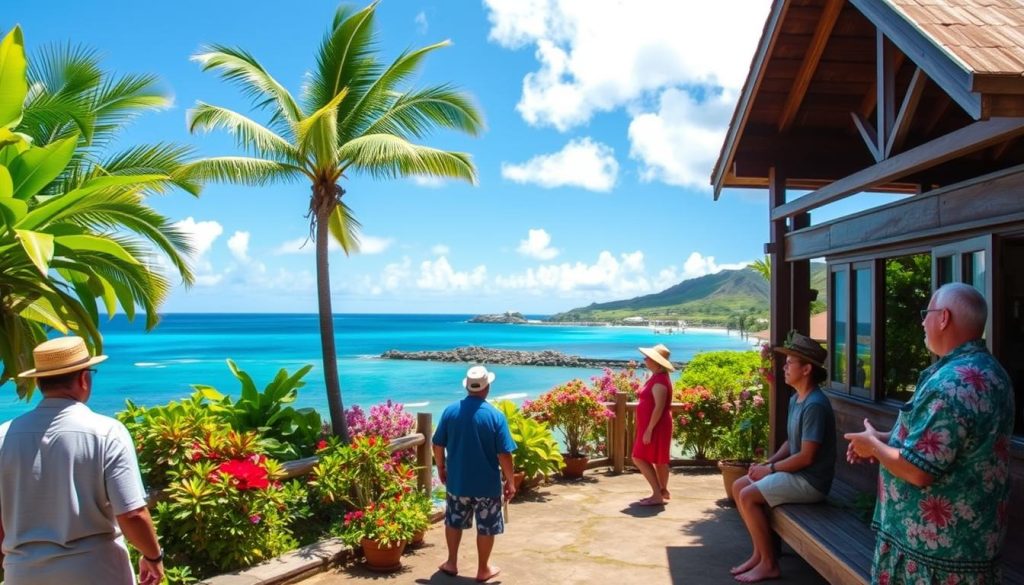
The territory has about 47,400 people. They live in a world where speaking two languages is common. Most people know both Samoan and English, helping keep their culture alive and connecting with the world.
Current Language Demographics
The language scene in American Samoa is diverse:
- More than 90% of the population is ethnically Samoan
- English and Samoan are the two official languages
- Most residents are bilingual, speaking both languages fluently
- Approximately 97% literacy rate across both languages
Historical Language Evolution
The story of language in American Samoa goes back a long way. The Samoan language comes from ancient Polynesian times, around 1,000 B.C. Then, European contact in 1722 and U.S. rule from 1900 to 1951 changed how people spoke.
Cultural Significance of Bilingualism
“Language is the roadmap of a culture. It tells you where its people come from and where they are going.” – Rita Mae Brown
Bilingualism in American Samoa is more than just talking. It’s a way to keep their culture alive while reaching out to the world. The mix of English language and Samoan shows the territory’s strong and flexible spirit.
Samoan Language: The Indigenous Voice
Explore the rich world of indigenous languages in American Samoa. The Samoan language is a key part of the cultural identity. It connects communities across the Pacific with its vibrant sounds.
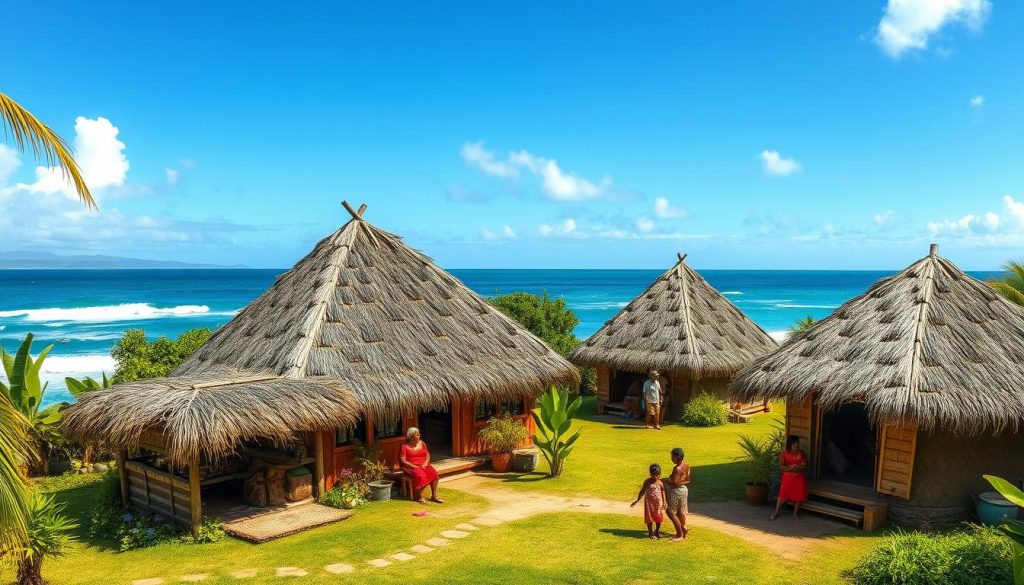
Preserving Samoan language is more than saving words. It’s about keeping alive the traditions of our ancestors. This language is crucial for nearly 88.6% of American Samoa’s people.
“Language is the road map of a culture. It tells you where its people come from and where they are going.” – Rita Mae Brown
- Total Samoan speakers worldwide: 510,000
- Percentage of speakers in Samoan Islands: 50%
- Samoan speakers in New Zealand: 95,428
- Samoan speakers in the United States: Over 180,000
The Samoan language has unique features that show its deep roots. It’s closely tied to Hawaiian and other Pacific Island languages. This creates a rich communication network across islands.
The Samoan language is alive and well, not just in American Samoa. It thrives in communities in New Zealand, Australia, and the United States. This shows the community’s strong commitment to their culture and passing down knowledge to future generations.
English in American Samoa: Role and Influence
English is key in American Samoa’s language scene, affecting how people talk in many areas. Even though not many speak it, it’s very important in social and work life.
Looking into how English is used shows interesting things about the territory’s culture and how people communicate.
Educational System and Language Use
In schools, English is a main teaching tool. Students learn both Samoan and English. This helps them get ready for different jobs.
- Bilingual curriculum in primary and secondary schools
- English used as primary instruction language
- Language policies promoting linguistic diversity
Government and Administrative Functions
English is used a lot in government work in American Samoa. It helps with clear communication and makes things run smoothly.
| Administrative Area | Primary Language | Secondary Language |
|---|---|---|
| Official Documents | English | Samoan |
| Public Services | English | Samoan |
| Legislative Proceedings | English | Samoan |
Business and Commerce Communication
English is the main language for business in American Samoa. It helps talk to people all over the world and grows the economy. Local businesses know how important English is for success.
“English bridges our local economy with global markets” – Local Business Leader
Using English wisely shows American Samoa’s dedication to good communication and adapting to different cultures.
American Samoa: Official and Widely Spoken Languages
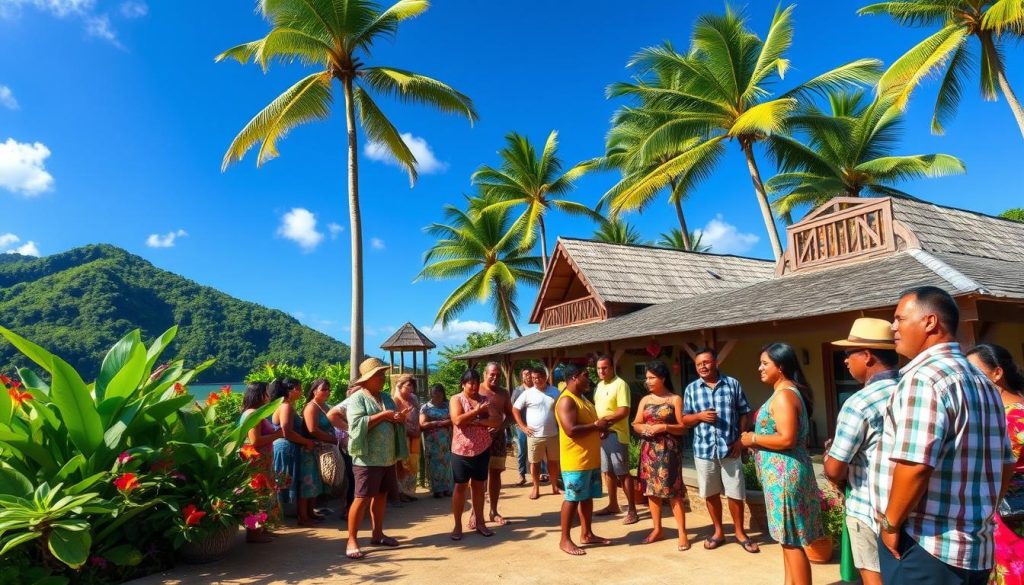
American Samoa’s language scene is a colorful mix of many tongues. It shows the beauty of Pacific Island languages. The territory, a part of the U.S., has two main languages: English and Samoan.
The mix of languages here is a story of keeping culture alive and changing with the times. Samoan, the native tongue, is still strong and tied to local customs. English is key for government and schools, making a place where both languages thrive.
*Language is the roadmap of a culture. It tells you where its people come from and where they are going.* – Rita Mae Brown
- Official Languages: English and Samoan
- Dominant Ethnic Group: 83.2% Samoan
- Primary Communication Channels: Bilingual interaction
Learning about American Samoa’s languages shows a balance between old traditions and new ways of talking. English and Samoan living together shows the area’s dedication to its roots and the world.
People here easily switch between Samoan and English. This skill is more than just talking—it shows the strength of Pacific Island cultures.
Language Distribution and Usage Patterns
Language in American Samoa is complex, weaving together urban and rural areas. It shows the rich culture and how language changes with each generation.
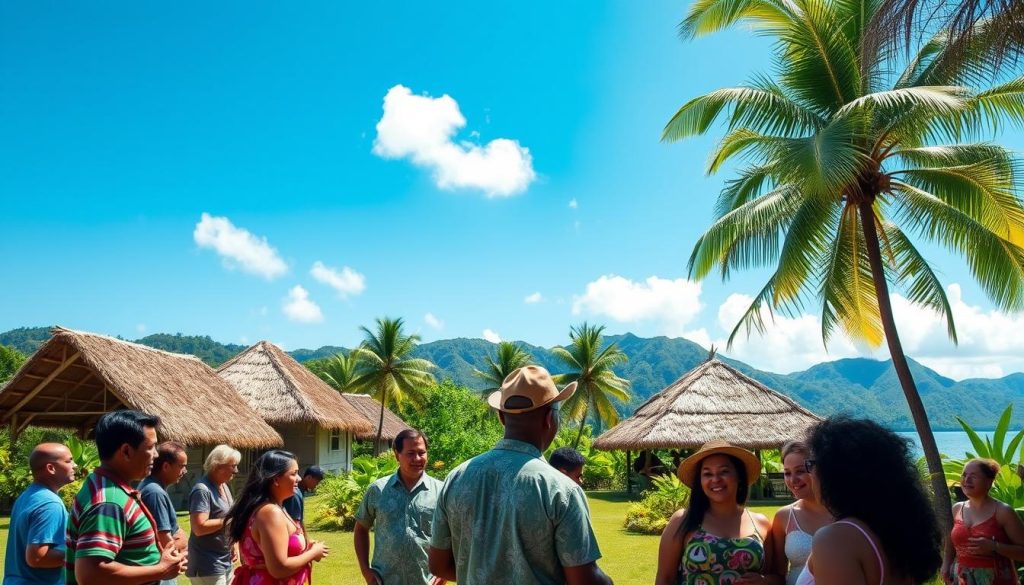
Urban vs Rural Language Preferences
In cities like Pago Pago, English is more common. But in rural areas, the traditional Samoan language is kept alive.
- Urban centers show increased bilingual communication
- Rural regions preserve indigenous language practices
- Approximately 80% of the population resides in rural areas
Age-Related Language Trends
Younger people are more flexible with language, easily switching between Samoan and English.
“Language is the roadmap of a culture. It tells you where its people come from and where they are going.” – Rita Mae Brown
Professional Environment Language Choice
In work settings, speaking multiple languages is key. English is crucial for business and government. But Samoan keeps cultural ties strong.
| Language Context | Usage Percentage |
|---|---|
| Official Government Communication | 65% Bilingual |
| Business Interactions | 55% English Dominant |
| Community Engagement | 75% Samoan Preferred |
Now, you see language in American Samoa as more than just talking. It’s a living, breathing part of the culture, where many languages thrive.
Language Preservation Efforts and Challenges
Keeping the Samoan language alive is a big deal for American Samoa’s culture. With about 370,337 Samoan speakers worldwide, keeping their language is tough.
Efforts to save the language include:
- Promoting bilingual education programs
- Documenting oral traditions
- Supporting community language workshops
- Developing indigenous language learning resources
But, English is getting more popular. Since the 1830s, English has been changing how Samoans talk. This makes keeping Samoan hard.
“Language is the road map of a culture. It tells you where its people come from and where they are going.” – Rita Mae Brown
Education is key in saving the language. Programs for kids help pass down Samoan culture and language through fun learning.
Only a few languages have been fully studied. The Samoan people are working hard to keep their language from being forgotten. They’re creating strong plans to save it.
- Establishing language documentation centers
- Creating digital archives of linguistic resources
- Implementing intergenerational language transfer programs
Your help and understanding can protect American Samoa’s culture for the next generations.
Impact of Pacific Island Languages
The language scene in American Samoa is rich and diverse. Each community adds its own special touch. This makes cross-cultural talks in the area deep and meaningful.
Pacific Island languages are key to keeping cultural identity alive. They help communities stay connected. The Tongan language, for example, is spoken by about 2.7% of the people.
Tongan Community Influence
Tongan speakers add color to American Samoa’s language scene. Their language helps in:
- Keeping cultural traditions alive
- Passing down knowledge from one generation to the next
- Creating unique ways of talking
Other Pacific Islander Language Contributions
Other Pacific Islander languages also play a big role. They make up about 3% of the languages spoken. These languages show a complex web of communication.
Cross-Cultural Communication Patterns
In American Samoa, people use many languages to talk to each other. They do this by:
- Showing respect for each other’s languages
- Adapting their language to fit the situation
- Enjoying the variety of languages
“Language is the roadmap of a culture. It tells you where its people come from and where they are going.” – Rita Mae Brown
Getting to know these communication patterns helps us see the complex social life of Pacific Island communities.
Modern Language Education and Policy
Language education in American Samoa is a mix of keeping cultural heritage alive and learning global communication. The territory’s unique languages lead to new ways of teaching bilingual education. This prepares students for both local and international chances.
The language policies aim to keep Samoan language rich while making sure everyone speaks English well. Schools have programs that mix:
- Native Samoan language teaching
- English skills building
- Training in cross-cultural communication
Students get a curriculum that supports learning in many languages. This helps them grow both academically and professionally. The system knows how vital language education is for keeping culture alive and for global readiness.
“Language is the roadmap of a culture. It tells you where its people come from and where they are going.” – Rita Mae Brown
Bilingual education in American Samoa focuses on full immersion. This approach helps students:
- Become strong in languages
- Understand cultures
- Be more flexible in thinking
The territory’s language policies aim to support linguistic diversity in our connected world. By focusing on both Samoan and English, schools open doors for students to thrive locally and globally.
| Language Policy Aspect | Focus Area | Implementation Strategy |
|---|---|---|
| Native Language Preservation | Cultural Identity | Mandatory Samoan Language Courses |
| English Proficiency | Global Communication | Integrated English Learning Programs |
| Bilingual Curriculum | Academic Excellence | Dual-Language Instruction Methods |
By investing in language education, American Samoa makes sure its students can handle the complex global world.
Conclusion
Your journey through American Samoa’s language shows a vibrant mix of communication. It reflects the territory’s rich cultural identity. The mix of Samoan and English is more than just language. It’s a bridge connecting old traditions with today’s world.
The language of American Samoa shows the strength of Polynesian culture. You’ll see how Samoan and English live together. Urban areas like Apia have more English speakers, while rural areas keep their traditional languages strong.
The future of language in American Samoa brings both challenges and chances. Bilingual education and new generations are changing how people talk. Young Samoans are getting better at using both languages. This keeps the unique culture alive, connecting past and present.
Understanding American Samoa’s language is more than just knowing words. It’s about seeing how language keeps culture alive. This Pacific territory’s language is a key part of its identity.
The above is subject to change.
Check back often to TRAVEL.COM for the latest travel tips and deals.
